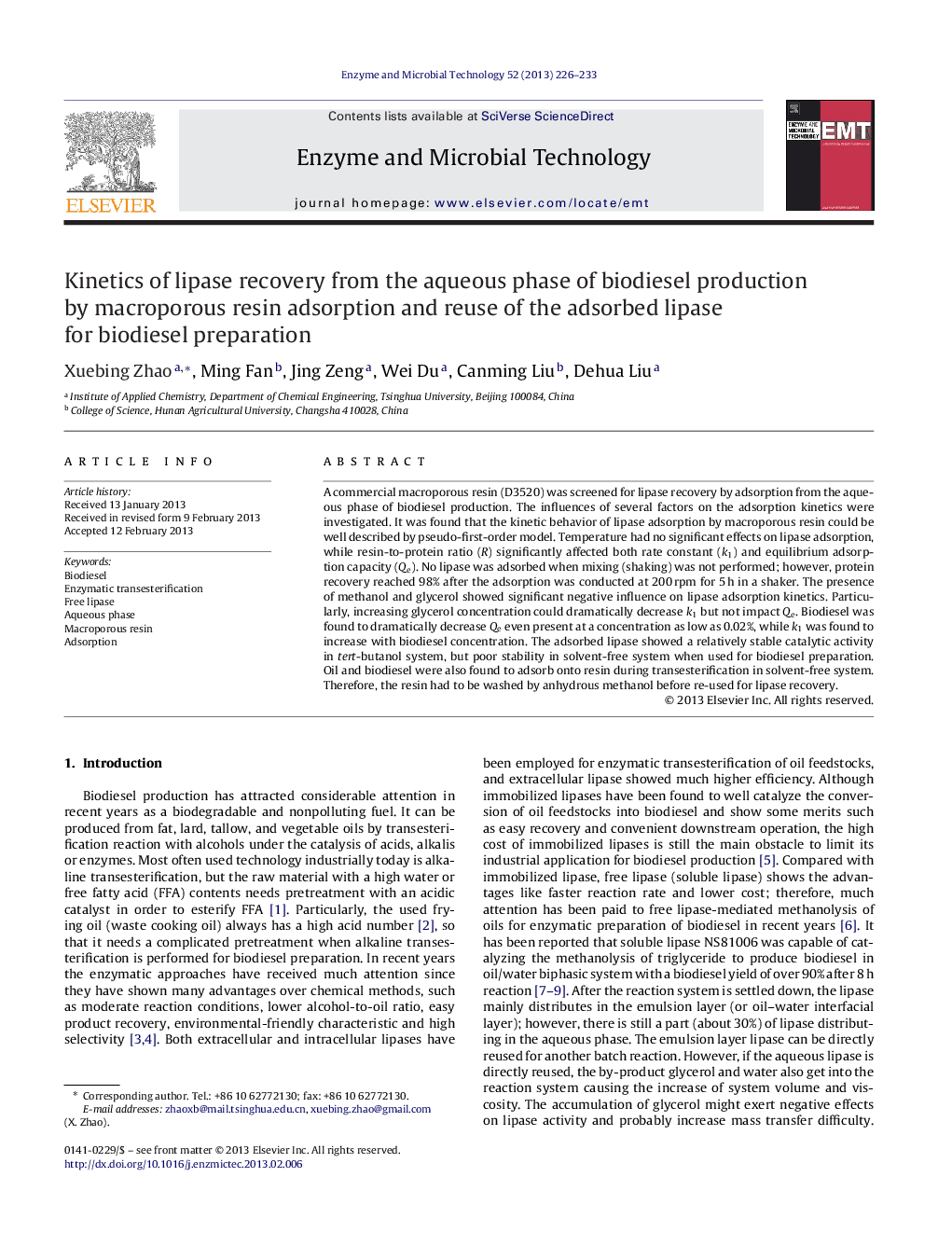| کد مقاله | کد نشریه | سال انتشار | مقاله انگلیسی | نسخه تمام متن |
|---|---|---|---|---|
| 17365 | 42663 | 2013 | 8 صفحه PDF | دانلود رایگان |

A commercial macroporous resin (D3520) was screened for lipase recovery by adsorption from the aqueous phase of biodiesel production. The influences of several factors on the adsorption kinetics were investigated. It was found that the kinetic behavior of lipase adsorption by macroporous resin could be well described by pseudo-first-order model. Temperature had no significant effects on lipase adsorption, while resin-to-protein ratio (R) significantly affected both rate constant (k1) and equilibrium adsorption capacity (Qe). No lipase was adsorbed when mixing (shaking) was not performed; however, protein recovery reached 98% after the adsorption was conducted at 200 rpm for 5 h in a shaker. The presence of methanol and glycerol showed significant negative influence on lipase adsorption kinetics. Particularly, increasing glycerol concentration could dramatically decrease k1 but not impact Qe. Biodiesel was found to dramatically decrease Qe even present at a concentration as low as 0.02%, while k1 was found to increase with biodiesel concentration. The adsorbed lipase showed a relatively stable catalytic activity in tert-butanol system, but poor stability in solvent-free system when used for biodiesel preparation. Oil and biodiesel were also found to adsorb onto resin during transesterification in solvent-free system. Therefore, the resin had to be washed by anhydrous methanol before re-used for lipase recovery.
► Recovery of free lipase from the aqueous phase of enzymatic production of biodiesel.
► Macroporous resin adsorption was used for lipase recovery.
► Adsorption kinetics described by pseudo-first-order model.
► Recycle of absorbed lipase for biodiesel preparation in tert-butanol and solvent-free systems.
Journal: Enzyme and Microbial Technology - Volume 52, Issues 4–5, 10 April 2013, Pages 226–233